|
There aren’t many levergunners who do not love
the ‘73 Winchester. It has been dubbed "The Gun
That Won The West", and was even the star in its
own movie, where it was supported by James Stewart
and other fine old western actors. The ‘73 is one of the
slickest-working actions ever conceived for a center fire
cartridge.
The action of the Winchester 1873 is basically
the same toggle link action as the previous Winchester 1866 and
the Henry before that, but modified to fire the center
fire Winchester cartridges. The workings of this type of
action, while not as strong as later actions such as the 1892,
is very fast and slick, making the ‘73 one of the most
preferred of Cowboy Action
Shooters, who appreciate its speed and smoothness.
I recently reviewed the Model 1876 rifle from
Chaparral
Arms, and was pleased with its finish and workmanship. While
there are several replica 1873 rifles on the market, I was
anxious to also try the Chaparral 1873, which has just started
shipping a couple of weeks ago.
Upon opening the soft gun case, I was
immediately impressed, again, with the beauty of the Chaparral
rifles. The casehardened receiver, lever, side plates, forend
cap, and buttplate display vivid case colors, and the
blued steel barrel, magazine tube, dust cover, and other small
parts have a smooth, rich, deep blue/black finish. The
cartridge lifter is of course brass, like the originals. The
sample rifle sent to me is chambered for the .38-40 (.38 WCF)
cartridge, as are all of the first ones being produced. These
guns are assembled in Connecticut, and therefore bear no foreign
proof marks, although the parts are made in Italy. The sample
rifle wears a tapered octagon twenty-six inch barrel, which
tapers from .860 inch at the front of the receiver to .740 at
the muzzle, and its full-length magazine tube holds fifteen of
the .38-40 cartridges, plus one in the chamber, for a total
capacity of sixteen.
The wood on the 1873 rifle, like that of the 1876
previously reviewed, has a fancy, highly figured pattern
applied over a plainer grade of hardwood. It makes the rifle to
appear to be wearing very high-grade walnut, but without the
price. The buttstock is finished with a crescent steel
buttplate, which has a sliding trapdoor compartment for a
cleaning rod. or other such device which might fit, be it extra
ammo, folding money, or the deed to your miner’s claim.
The sample rifle weighed in at eight pounds and three ounces,
and balanced just forward of the receiver, making it very
comfortable to carry in one hand.
Shooting the Chaparral ‘73 proved to be a
delight. Having no .38-40 ammo readily available here, I had to
look no farther than Starline Brass
for high-quality, properly head-stamped cartridge cases.
Starline produces some of the finest brass available on the
planet, and they especially cater to the needs of shooters
who like the old calibers which have been forgotten by other
manufacturers, along with many very modern calibers as well.
Loading the Starline brass was as simple as loading for any
bottlenecked cartridge. I just gave the cases a shot of lube,
and ran them through the Dillon 550B
press. By the way, the casefeeder
and shell plate that I had set up for .45 Colt worked perfectly
with the .38-40 cases, feeding automatically into the Dillon
press.
My favorite load tested in the 1873 used six
grains of IMR Trail Boss powder
with a 180 grain lead bullet. This proved to be a very accurate
load, chronographing 1049 feet-per-second, and with an amazing
consistency of a 1.5 average deviation! From the Chaparral, this
produces one-hole clusters at twenty-five yards using the
buckhorn sights. Trail Boss powder continually impresses
me with its accuracy and consistency. It is like no other powder
that I have ever tried, and is perfect for such mild to medium
loads used in Cowboy Action Shooting.
The function of the Chaparral ‘73 was
flawless, but the handloader must be sure to keep the overall
cartridge length within specs. The gun ran smoothly throughout
the tests. The .38-40 1873, properly loaded, would serve
well as a rifle for whitetail deer or other similarly sized
game, but I suspect that most will be purchased by Cowboy Action
Shooters, or others who prefer a smooth-running, fast and fun
levergun. It is a dandy rifle, well-made, and assembled in
America, near the place where the original Winchester ‘73
rifle was built. It will be available later chambered for other
calibers and in different barrel lengths, including a
round-barreled carbine. It is a fun gun to shoot, and is like
shooting a piece of history. I like it.
Check out the Chaparral rifles online at:
http://www.chaparralfirearms.com.
For high quality Starline cartridge cases, go
online to: www.starlinebrass.com.
Jeff Quinn
NOTE: All load data posted on this
web site are for educational purposes only. Neither the author nor
GunBlast.com assume any responsibility for the use or misuse of this data.
The data indicated were arrived at using specialized equipment under
conditions not necessarily comparable to those encountered by the
potential user of this data. Always use data from respected loading
manuals and begin working up loads at least 10% below the loads indicated
in the source manual.
  
Got something to say about this article? Want to agree (or
disagree) with it? Click the following link to go to the GUNBlast Feedback Page.
|
|
Click pictures for a larger version.
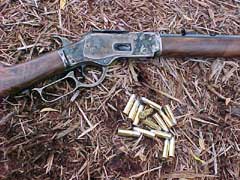
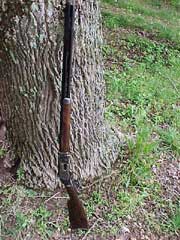
Chaparral’s Winchester 1873 Replica Lever Action Rifle.
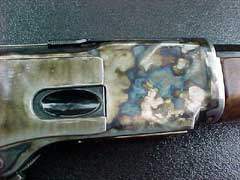


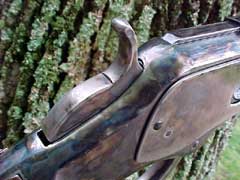
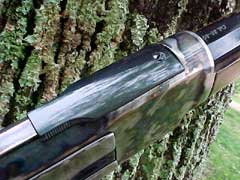
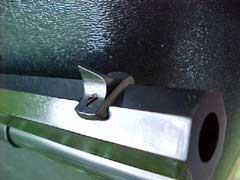
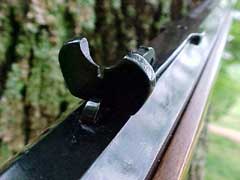

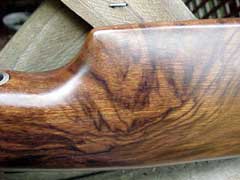
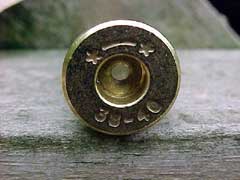
Starline makes excellent brass cartridge cases for the
.38-40.
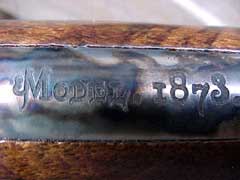
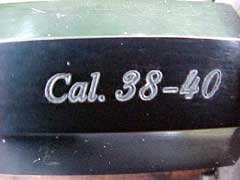
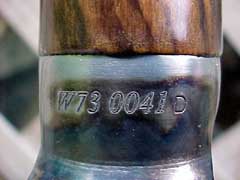
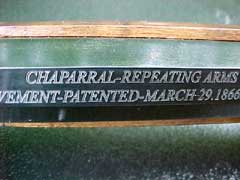
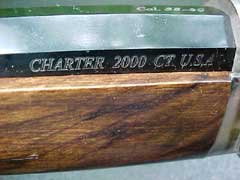
|
![]()